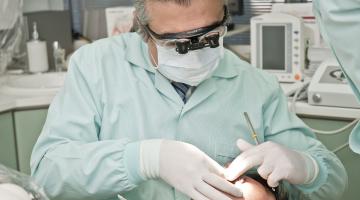How Long Do Breast Implants Last?
Deciding to get breast implants is a significant personal decision that allows one to enhance their breast size/shape and attain their desired figure using saline or silicone implants.
Common reasons for getting breast implants include:
- Returning to a previous breast size after a decrease due to pregnancy, weight loss, or aging
- Adjusting asymmetrical breasts
- Restoring breasts that have changed due to cancer or other health conditions
- Affirming gender identity
- Boosting confidence and self-esteem
It is a common misconception that breast implants need to be replaced every ten years, but this is not necessarily true. While breast implants do not last forever, every patient is different and the lifespan of breast implants can vary.
The average lifespan of breast implants
Breast implants typically last between 10-25 years. That said, the spontaneous implant failure rate does increase by 1% per year after the first ten years. The older your breast implants are, the more likely they are to rupture. Median implant survival is 15 years.
Note that there is no major difference in the life expectancy of saline or silicone implants, as they are both proven to last as long as the other when implanted at the same time.
Common signs of breast implant rupture include changes to your breast size or shape, firmness, or swelling. However, sometimes a rupture can occur without any signs.
Additionally, it is possible that your breast aesthetic could change over time, in which case you may elect to undergo a breast implant revision.
Reasons for breast implant removal or replacement
If your breast aesthetic has changed or you have experienced a breast implant rupture, it may be time to consult your board-certified plastic surgeon about a breast implant revision procedure.
Common reasons for breast implant removal or replacement include:
Capsular contracture or hardened breast
This occurs when scar tissue hardens around one or both breast implants. This hardened scar tissue can cause a feeling of tightness, pain, or tenderness, and may alter the size or shape of the breasts.
Saline implant ruptures
This occurs when, due to a hole or tear in the breast implant, saline leaks out and becomes harmlessly absorbed into the surrounding tissue. The implant will “deflate,” causing the breast to lose its size and shape.
Silicone implant ruptures
Often called a “silent rupture,” silicone implant ruptures are less noticeable than saline implant ruptures. This is because the thick silicone gel often stays within the implant or surrounding tissue. In the event of a silicone implant rupture, you may notice an uneven or reduced breast size or changes in sensation such as tingling, swelling, burning, or numbness.
Rippling
This occurs when changes cause the implants to become noticeable through the skin, which appears like “ripples.” Depending on the severity of the rippling, you may be able to feel it as well.
Change in position
Whether you have breast implants or not, your breast position changes over time due to normal body fluctuations. If your breast implants change shape or position due to aging, pregnancy, or changes in weight, you may consider a breast lift or implant revision to return your breasts to their desired shape.
Personal preference
If you have experienced a change in personal goals for your body, or the initial results did not deliver the desired aesthetic, you may choose to remove or replace your breast implants.
Replacing or removing your breast implants
Depending on the reason and severity of any potential issues, your plastic surgeon can advise recommendations for breast implant revision.
Options for breast implant revision include:
- Complete implant removal
- Implant removal and breast lift
- Implant removal and hardened scar tissue removal
- Implant replacement
- Implant replacement and breast lift
If you’re unsure which option is most appropriate for you, consult with your board-certified plastic surgeon for personalized insight. They can provide guidance as to the right approach to addressing any needs or concerns with your breast implants.
Proper care of implants helps prolong the lifespan
While the lifespan of breast implants varies from person to person, how you care for your breast implants is a significant factor in their longevity. There is much you can do to help maintain them over their lifespan.
Proper care begins during the breast augmentation recovery period. Your plastic surgeon will advise you to wear a support garment or surgical bra, which decreases the effects of gravity on your breasts over time. In addition to wearing the support garment or surgical bra, make sure to follow all recommended after-care procedures to support a healthy recovery from your surgery.
Following the recovery period, be diligent about caring for your breast implants to support your new silhouette by:
- Wearing properly fitted bras and avoiding push-up bras with too much lift
- When engaging in high-impact exercise, wearing a high-quality sports bra to protect your breasts
- Maintaining good posture to keep your breasts from sagging
- Sleeping on your back to reduce the pull of gravity and support the ligaments in your breast tissue
- Avoiding excessive sun exposure
- Cutting back on smoking and drinking
- Maintaining a relatively consistent weight, as extreme fluctuations can affect your skin elasticity
- Keeping your skin and muscles strong with a nutrient-rich diet
Additionally, follow your plastic surgeon’s guidance regarding annual checkups and regular self-checks.
Meet with a board-certified plastic surgeon
If you’re thinking about getting breast implants, the first step is to consult with a board-certified plastic surgeon who can offer personalized insight as to what you can expect in terms of results and longevity.
More to Read:
Previous Posts:








